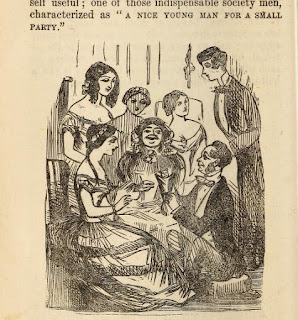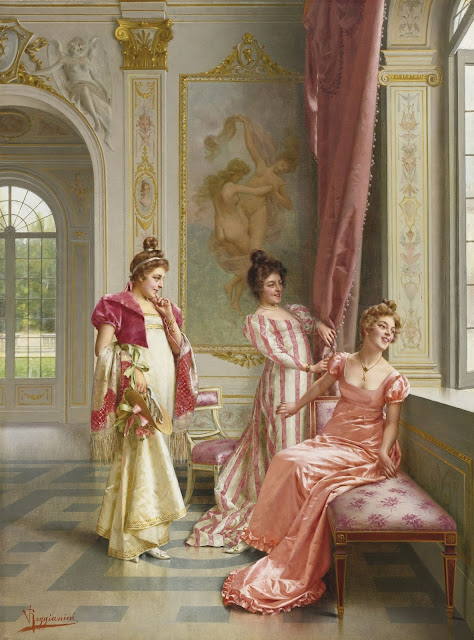Into the Rabbit-Hole: Victorian Etiquette
At some point in every writing project, I find myself Googling something man was never meant to Google. This blog will chronicle the odd things I've stumbled upon, down the rabbit-holes of Victoriana, steampunk, and creative writing. Here, for your enjoyment, are the gleanings of an anachronistic writer with a morbid curiosity.
My pandemic reading list this week is full of Victorian etiquette books. My favorite is The illustrated manners book; a manual of good behavior and polite accomplishments. 19th-century titles really leave nothing to the imagination.
 |
| "Look, Obadiah, if you're not going to do a puppet show then just go home or something." (Image from The Illustrated Manners Book, Anon, 1855.) |
The illustrated manners book is a U.S. etiquette book, anonymously authored. It's a mix of advice and opinion, with funny illustrations thrown in. It was published in 1855, on the brink of the American Civil War. Which means you'll find insightful advice about how to discuss abolition with actual slave owners (Spoilers: Don't bother; they just don't get it.)
This book is such a fantastic, hilarious read because "manners" in the 19th century included way more than just etiquette.
The author covers the stuff you'd expect, like bowing (so much bowing), behaving at a dinner party, and politely killing someone in a duel. (Btw, if you're rude to your opponent at any point besides that one time where you shoot him in the face, you've committed a major social faux pas.)
But he also has opinions about everything else a cultured Victorian was expected to know. Mr. Anonymous will gladly mansplain it all:
- How to dress your kids
- When it's okay to look at women's ankles (hint: you'll just be able to tell that they want you to)
- How to pronounce French words
- What to do with your hands at parties
- How to shop for everything from horses to women's underwear.
 |
| There's nothing better for catching a husband than a good sturdy hula-hoop. Don't forget to look uninterested or he'll think you're a slut. (Image from The Illustrated Manners Book, Anon., 1855) |
You might expect, as a Victorian, that he'd have some stern words for women, who were traditionally bound by a complex, oppressive set of social rules. Actually, though, he goes out of his way to say how women should totally be able to wear men's clothes as long as they're well-tailored and neat. This may be some unexpected progressivism.
Buuuuuut it may also just be a little Male Fantasy Moment. His idea of women cross-dressers assumes they're exercising their rights mainly because they know men's clothing makes them look so smokin' hot.
 |
| The Illustrated Manners Book, Anon., 1855 |
He also takes every possible opportunity in this book to remind us that really it should be totally okay for women (and I guess men but whatevs) to be naked because clothing is just a social construct etc. And of course, not for one second does he mention men who might want to dress as women. As someone who writes about a cross-dressing Victorian gentleman detective, I'm a little butthurt here.
But, maybe because the author is (or presents himself as) a man, most of his detailed advice and criticism is aimed at men. Which brings me to my favorite illustration in the whole book and perhaps ever. So before we come up for air, I'll leave you with the author's nugget of wisdom about "The Smart Man."
 |
| The Illustrated Manners Book, Anon., 1855 |
The modern equivalent of a pickup artist crossed with a hustler, this gentleman knows those hips don't lie. And "he don't care who else finds it out." Volunteers to rewrite this as a hip-hop song, please?
If you want to read more of The illustrated manners book (and who wouldn't want to brush up on their dueling etiquette in these uncertain times?) you can find it--and a trove of other treasures--at the link at the top of the post or at archive.org.




Comments
Post a Comment